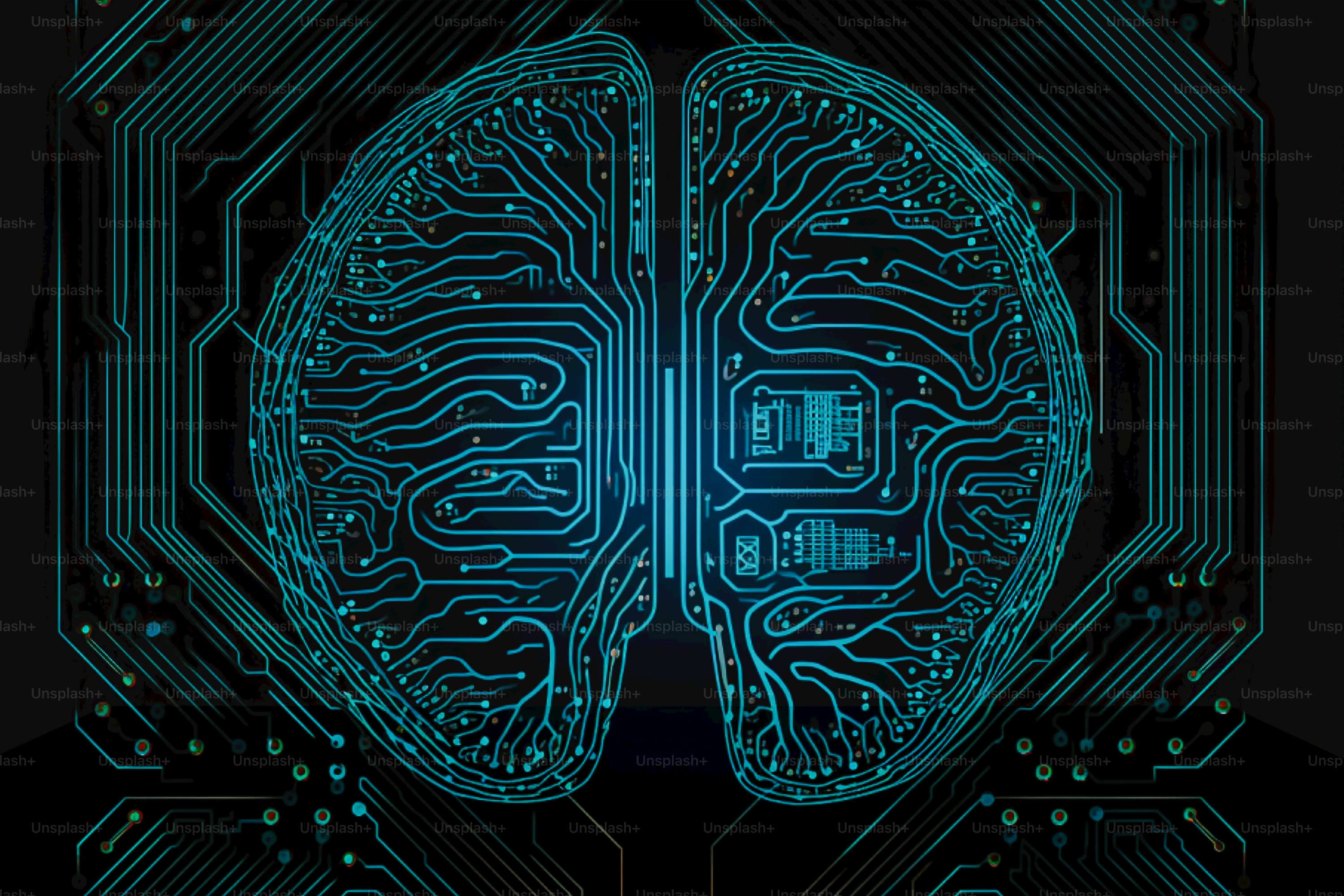Unlocking the Power of Transparency through Explainable AI

Strong 8k brings an ultra-HD IPTV experience to your living room and your pocket.
Introduction:
Artificial Intelligence (AI) has made significant advancements across industries, providing solutions that streamline operations, enhance decision-making, and predict outcomes with remarkable accuracy. However, one of the major challenges facing the widespread adoption of AI is the lack of transparency in how these systems make decisions. This issue is particularly concerning in sectors like criminal justice, healthcare, and finance, where decisions can have far-reaching consequences on individuals' lives. The concept of Explainable AI (XAI) is emerging as a solution to this problem, offering insights into AI's decision-making process. By making AI more transparent, XAI can help mitigate concerns such as algorithmic bias and improve trust in automated systems. In this article, we explore the role of Explainable AI in fostering transparency, particularly in its potential to combat algorithmic bias in criminal justice.
Download FREE Sample of Artificial Intelligence Market
What is Explainable AI (XAI)?
Explainable AI refers to the design of artificial intelligence systems that can provide clear, understandable explanations of how they make decisions. Unlike traditional "black-box" AI systems, which generate outcomes without offering insight into their reasoning, XAI aims to create models that can explain their decisions in human-readable terms. This transparency allows users to understand why a specific decision was made, which is crucial in high-stakes areas such as law, healthcare, and finance.
XAI is built on the idea that as AI systems become more integrated into critical decision-making processes, they must be able to justify their actions to stakeholders. For example, in criminal justice, if an AI system is used to assess the risk of reoffending or determine bail eligibility, an explanation of how these decisions are made is essential for ensuring fairness and accountability.
The core of XAI involves developing algorithms and models that are interpretable and explainable without sacrificing performance. There are various methods of achieving explainability, such as visualizing the decision-making process, providing feature importance scores, and creating simpler, more transparent models. In many cases, these techniques allow for more ethical, accountable, and fair use of AI.
The Importance of Transparency in AI
Transparency is critical for building trust in AI systems. If users do not understand how decisions are being made, they may become suspicious or reluctant to trust the technology, even if the outcomes are objectively accurate. This lack of understanding can lead to fear, resistance to adoption, and skepticism about AI’s reliability and fairness.
In sensitive areas such as criminal justice, the stakes are even higher. Decisions made by AI systems can have life-altering consequences for individuals, including sentencing, parole eligibility, and bail decisions. Without transparency, there is a risk that AI systems could perpetuate inequalities or make biased decisions based on flawed or incomplete data. By ensuring that AI decisions can be explained and understood, transparency mitigates these risks and fosters accountability.
Transparency also aids in troubleshooting and improving AI systems. When users and developers can see how decisions are made, they can identify potential errors, biases, or areas of improvement. For example, if an AI system incorrectly classifies certain factors as more important than others, developers can adjust the model to better align with real-world outcomes.
The Role of Explainable AI in Combating Algorithmic Bias in Criminal Justice
One of the most pressing concerns with AI in high-stakes domains is the potential for algorithmic bias. Algorithmic bias occurs when an AI system produces outcomes that are systematically unfair or discriminatory against certain groups of people. In criminal justice, this can manifest as biased sentencing, parole, or bail decisions based on race, socioeconomic status, gender, or other factors that should not influence the outcome.
AI systems are often trained on historical data, which can contain biases inherent in human decisions. For example, if a criminal justice system’s data reflects past decisions that disproportionately favored certain demographics, the AI system could unintentionally replicate these biases. This is particularly concerning in a field like criminal justice, where biased outcomes can lead to disproportionate incarceration rates for marginalized groups and the reinforcement of societal inequalities.
Explainable AI plays a key role in identifying and addressing these biases. By providing a clear explanation of how a decision was made, XAI can help highlight when bias is present. For example, if an AI system is used to predict the likelihood of reoffending and places undue weight on certain risk factors, such as prior arrests or neighborhood associations, these factors may be revealed through explainability techniques. Understanding these decision-making processes allows for targeted interventions to remove or adjust biased variables.
Moreover, transparency provided by XAI enables stakeholders to scrutinize the fairness of AI systems and hold developers accountable for their actions. This scrutiny is essential for ensuring that AI models do not perpetuate historical inequities in the criminal justice system. Through careful monitoring and explanation of AI decisions, it becomes possible to audit the system for bias and ensure that it aligns with ethical standards and social justice goals.
Enhancing Fairness and Trust in Criminal Justice AI Systems
The application of AI in criminal justice has the potential to streamline decision-making and make the system more efficient. However, without proper safeguards, these systems can inadvertently introduce or reinforce biases that negatively affect certain groups. One of the main challenges faced by criminal justice AI models is ensuring that they do not rely on unfair or prejudicial data, leading to biased predictions or decisions.
Explainable AI helps address this challenge by making the inner workings of the model transparent and accessible for review. If a model shows that a particular feature, such as race or zip code, is disproportionately influencing a decision, this can be flagged and corrected. Additionally, by providing transparency around the model’s decision-making process, it is easier to build a system that aligns with societal values of fairness and equality.
For instance, in the context of risk assessments for parole decisions, an AI system might consider a variety of factors, such as criminal history, family ties, or employment prospects. If the system places excessive weight on irrelevant factors, such as prior arrests that did not result in convictions, these biases can be identified and adjusted with the help of explainability. By doing so, the criminal justice system can avoid reinforcing systemic inequalities and improve the fairness of AI-generated outcomes.
1. AI Auditing and Accountability
AI systems must be auditable to ensure that they are operating fairly and without bias. XAI allows for auditing by providing clear records of how decisions are made. This enables third-party auditors, policymakers, and advocacy groups to examine whether the system is working as intended and whether it adheres to legal and ethical standards. If an AI system is shown to be biased or unfair, stakeholders can take corrective actions to adjust the system or retrain it with more balanced data.
In criminal justice, the need for accountability is paramount. If an AI system is used in sentencing decisions, it must be transparent enough for defense attorneys, judges, and policymakers to understand and challenge the reasoning behind decisions. This level of accountability fosters trust in the system, reassuring the public that decisions are not arbitrary or influenced by hidden biases.
2. Empowering Affected Individuals
Another key benefit of explainable AI in the criminal justice system is its ability to empower individuals who are directly affected by AI-driven decisions. For instance, if an individual’s parole eligibility is assessed by an AI system, providing a clear explanation of the decision allows the individual to understand how their case was evaluated. If the individual feels that the decision is unjust, they can challenge it with a more informed understanding of the reasoning process.
Furthermore, transparency helps individuals and their legal representatives advocate for fairness and accountability in the system. When AI decisions are explainable, affected individuals have the opportunity to identify errors, biases, or inconsistencies in the data, providing them with the tools to request corrections and ensure fair treatment.
How Explainable AI Can Drive Ethical AI Development
As AI systems continue to be integrated into critical decision-making areas like criminal justice, ethical considerations must remain a top priority. The ultimate goal of XAI is to ensure that AI systems not only produce accurate results but also do so in a way that is fair, transparent, and aligned with societal values.
By prioritizing explainability, AI developers can work towards more ethical AI systems. This involves creating algorithms that can explain their decisions in ways that are understandable and accessible to non-experts. With this transparency, developers can identify potential ethical issues early in the development process and make adjustments to ensure fairness.
Moreover, explainable AI can facilitate collaboration between AI developers, criminal justice experts, ethicists, and policymakers to ensure that AI is used in a manner that promotes justice and equality. By working together and fostering transparency, stakeholders can help mitigate risks such as algorithmic bias, discrimination, and unintended harm.
Conclusion
Explainable AI is unlocking the power of transparency in AI-driven systems, particularly in high-stakes fields like criminal justice. By making AI decisions more understandable and interpretable, XAI ensures that these systems operate fairly, ethically, and without bias. In the context of criminal justice, explainability is vital for combating algorithmic bias, enhancing fairness, and ensuring that AI decisions do not perpetuate inequalities in the system. Through transparency, AI can become a tool that supports justice, accountability, and ethical decision-making, ultimately leading to better outcomes for individuals and society as a whole. As AI continues to evolve, prioritizing explainability will be essential for building trust and ensuring that AI serves the public good in a fair and responsible manner.
Read the complete blog
Note: IndiBlogHub features both user-submitted and editorial content. We do not verify third-party contributions. Read our Disclaimer and Privacy Policyfor details.


